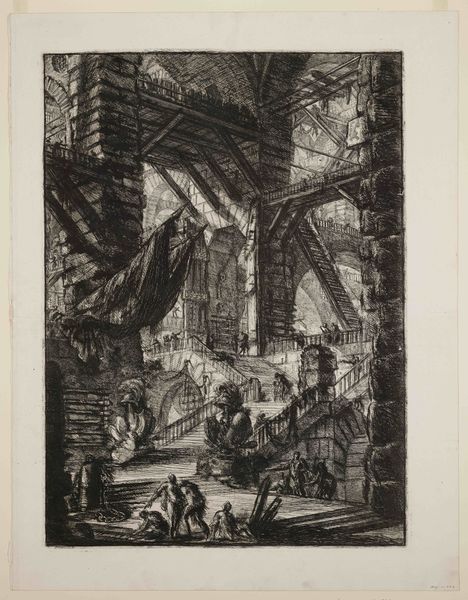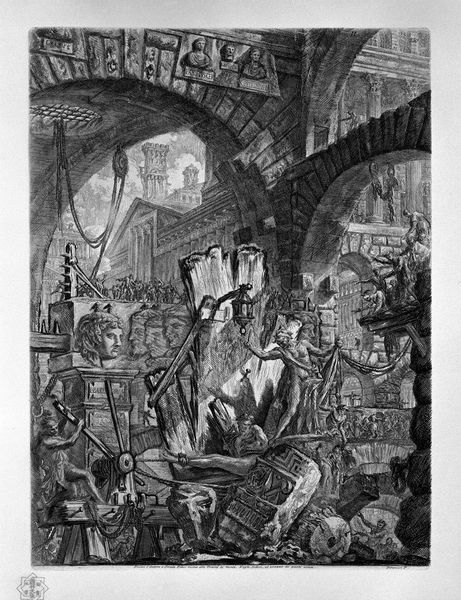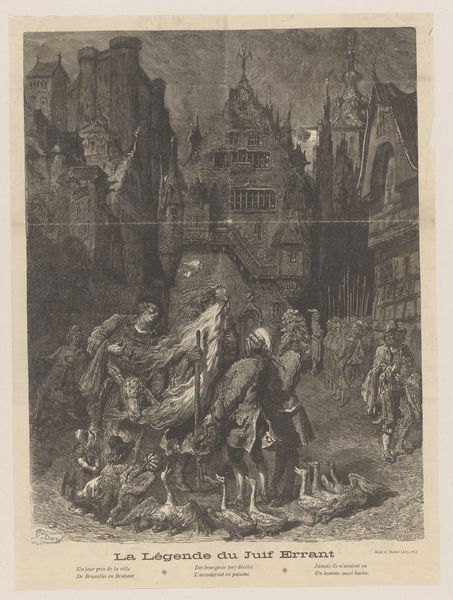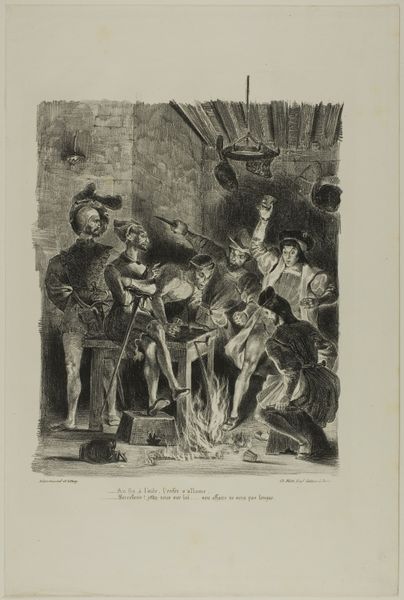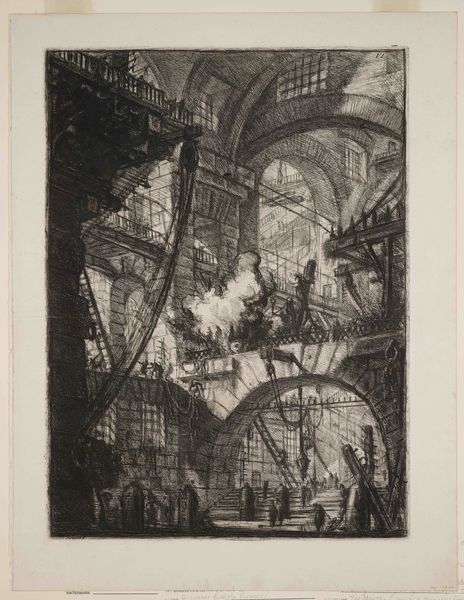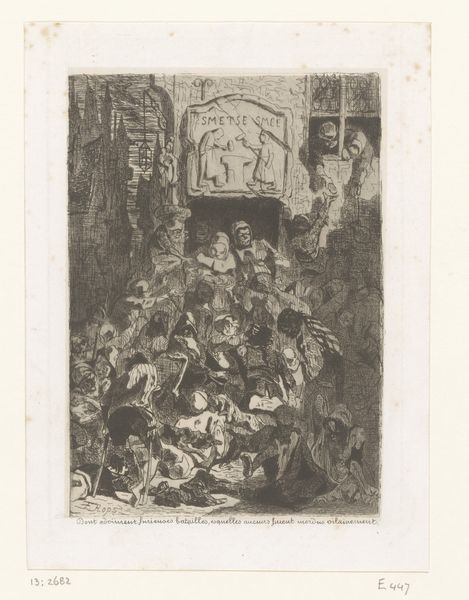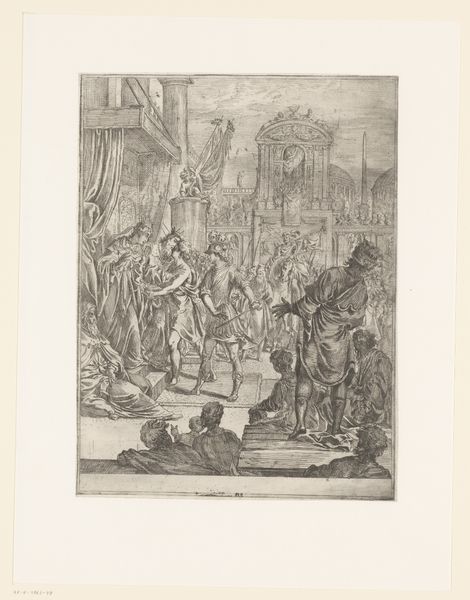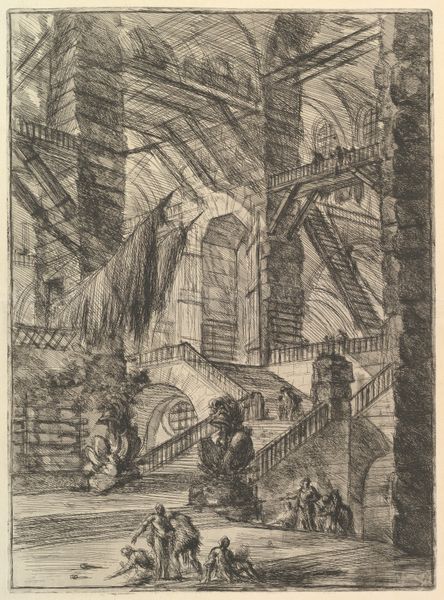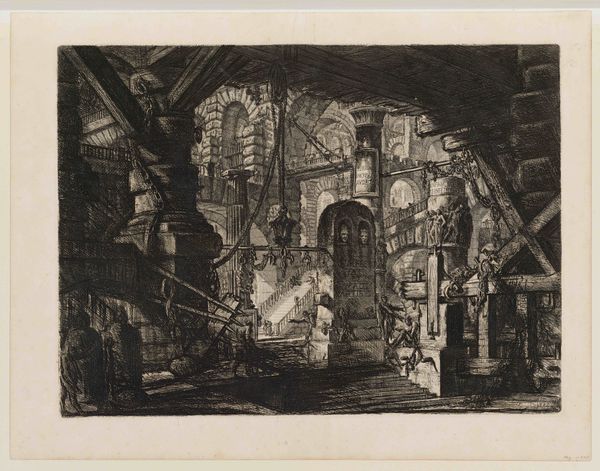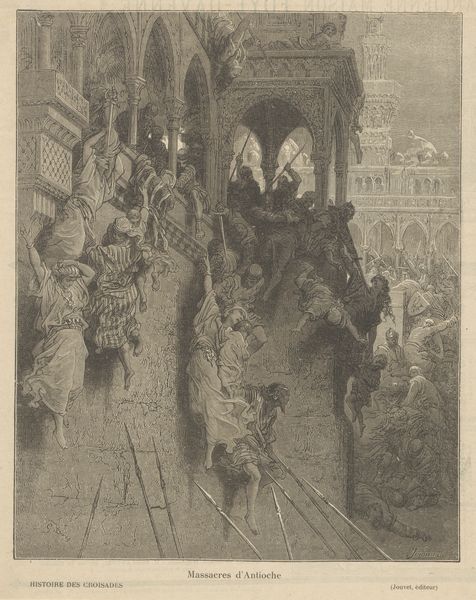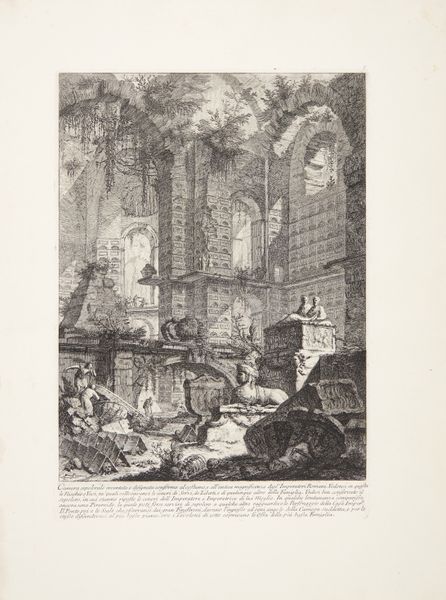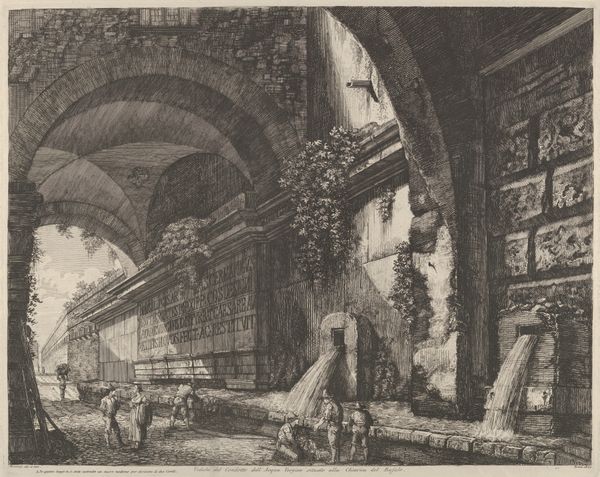
Dimensions: 22 1/16 x 16 3/8 in. (56.04 x 41.59 cm) (plate)
Copyright: Public Domain
Curator: This is Giovanni Battista Piranesi’s etching, "The Man on the Rock," dating back to about 1761. You can find it here at the Minneapolis Institute of Art. Editor: Wow, a Piranesi! My first thought? Claustrophobia, even though it’s technically a landscape. All that frenetic detail, those looming arches... I feel trapped inside a fever dream about ancient Rome. Curator: Absolutely. Consider Piranesi's broader engagement with the aesthetics of ruin and the power dynamics embedded within the idealized image of antiquity. Here, we see not only the grandeur but also the decay, the deconstruction, almost a visual commentary on the transience of power itself. Editor: I love how he mingles reality with invention. I get lost in the sheer density of the textures; there's almost something tactile about the way he renders stone and shadow. It's gritty. Curator: And it reflects a tension of his era, too. His almost archaeological obsession served not just as a historical record, but also as a pointed statement toward contemporary architectural trends, particularly neoclassicism, as well as papal authority. Editor: Yes, you see the statement being made there with the chaotic mix of monumental and everyday objects. Almost like a collage. Are those giant architectural fragments in the foreground intentional artistic commentary on something crumbling down, in order to rebuild itself from the very foundations? Curator: Exactly. He pushes the boundaries, unsettling our assumptions about the stability and permanence that those Roman ruins symbolize. Moreover, this very act speaks about the status of marginalized communities within this decaying sociopolitical framework. The engraving process allowed his work to have wider audiences, something to keep in mind when you think of how it may be consumed by varied socioeconomic stratifications. Editor: I just love how utterly overwhelming it is! There’s always a tiny detail to focus on. You know, now I’m getting that Baroque sense of theatricality and movement but mixed with something altogether darker and more unsettling. Curator: Piranesi offers us a visual experience demanding a continuous reevaluation of our historical and contemporary placement, doesn't he? Editor: Indeed. It makes one think about who benefits from the telling of the so-called truth, but who, equally, can reinterpret and subvert even these very entrenched ideas.
Comments
minneapolisinstituteofart almost 2 years ago
⋮
Piranesi added this plate and plate V to the series in 1761, when he was reworking the original fourteen plates. The two new plates reflect his increasing familiarity with the art of Roman antiquity, which played a much more prominent role in these new images. Here, amid a profusion of sculptural reliefs, he makes the torture of a prisoner absolutely explicit.
Join the conversation
Join millions of artists and users on Artera today and experience the ultimate creative platform.
